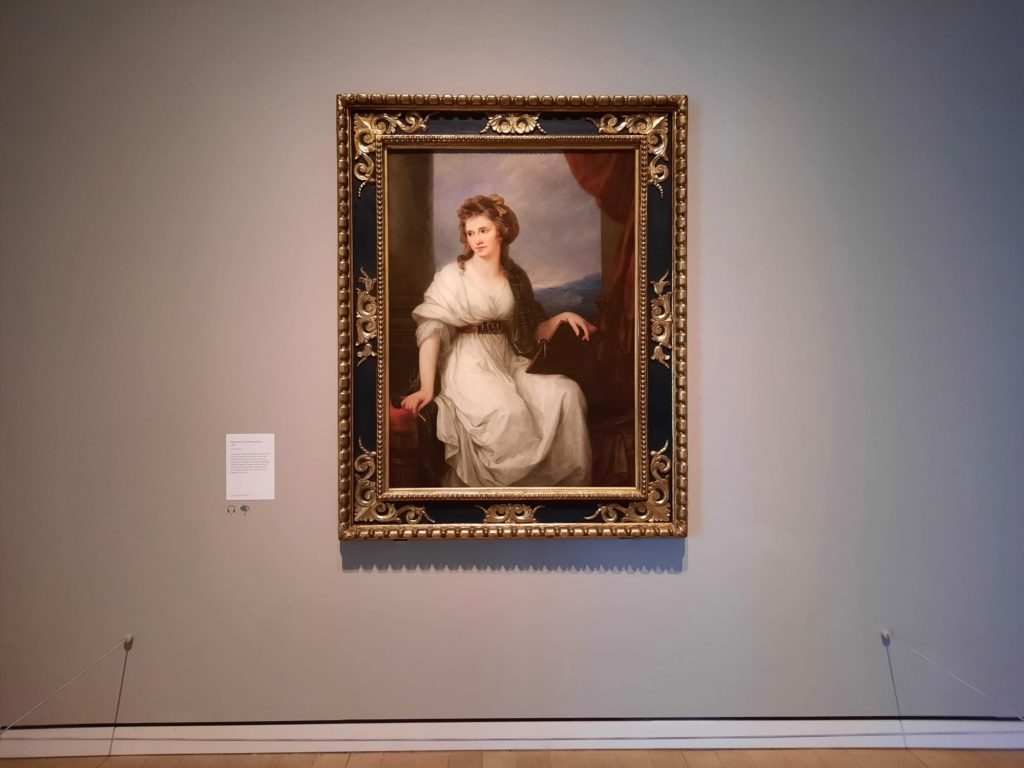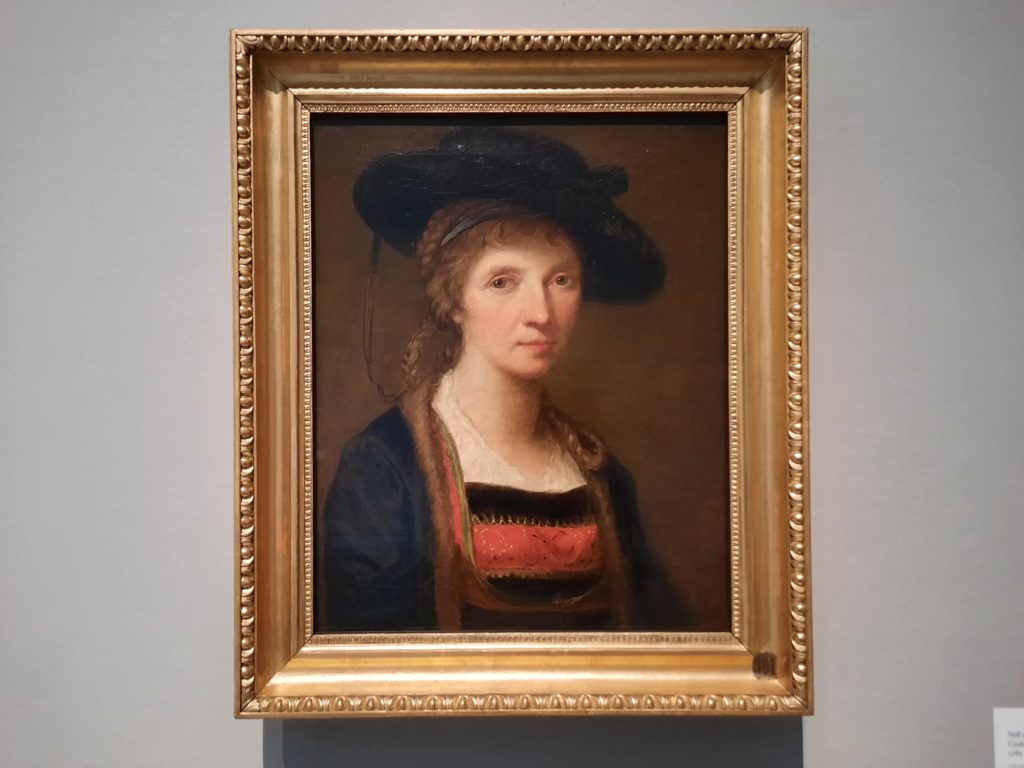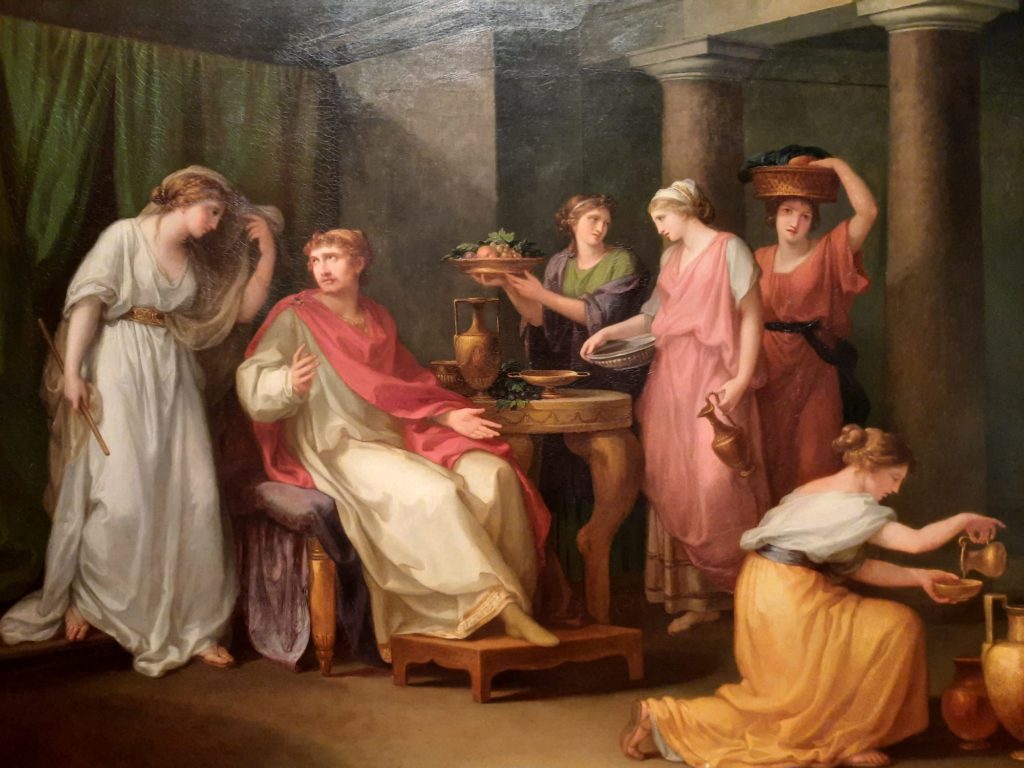Angelica Kauffman – Royal Academy, London
The Royal Academy’s exhibition about one of its two founding female members, Angelica Kauffman reminds us of the difficulties faced by pioneering female artists, whilst also giving a decent overview of Kauffman’s work.





Angelica Kauffman
Maria Anna Angelika Kauffmann was born in what is now Switzerland in 1741. The only child of Austrian painter Joseph Johann Kauffmann, the artist who would later be known as Angelica Kauffman learned her craft from her father. A prodigy gifted at languages, music, and art, she made the choice to focus on painting and had important sitters by the age of twelve.
Despite her father’s modest means Kauffman had a very cultured, Age of Enlightenment sort of upbringing. She lived virtually everywhere in Italy between 1757 and the mid 1760s. She was a member of the Accademia di Belle Arti di Firenze, and her linguistic abilities made her a popular artist with English nobles on the Grand Tour. Finding her Neoclassical style beginning to make traction in England, she moved there in 1765. With a good network already Kauffman landed on her feet. She became friends with Sir Joshua Reynolds, and they painted each others’ portraits. She was one of two women (along with Mary Moser) to become a member of the Royal Academy on its establishment in 1769. In the 1780s she moved back to Rome, and when she died in 1807 the sculptor Antonia Canova directed her grand funeral.
Kauffman’s gender undeniably restricted her artistic career. She was able to learn painting because she was apprenticed to her father. But in Johan Zoffany’s famous group portrait of the founding Academicians she and Mary Moser are represented as pictures on the wall: they were not allowed to attend life drawing classes as it was too unseemly. She was however a successful artist, painting mostly portraits, self-portraits and history paintings. The Royal Academy has brought a selection of these together in their small upstairs exhibition space (still bearing the Sackler name).






What Lies Beneath the Neoclassical Surface?
Having seen such a fabulous exhibition recently at the Royal Academy, I was struck with the contrast. Entangled Pasts looked at the same period: the founding of the Royal Academy. But it knocked down the pedestals of veneration and tradition, exploring the seedy underbelly of exploitation and legitimisation instead. Upstairs in Angelica Kauffman I didn’t see much application of that same critical lens. And I found some of the arguments a little curious. Kauffman’s depiction of female-led stories from history becomes a feminist narrative of centering women. Is it that, or was she restricted to employing female models and painting what was expected of her? I’m not quite sure, but the lack of acknowledgement of some of these points made me dubious.
So it’s a nice exhibition, but not an earth-shattering one. The Neoclassical style is a little boring to us now. It’s all Grecian profiles, carefully-chosen colours and scenes of soaring emotion. The portraits are a little more interesting, capturing a playfulness in many of the subjects. The self-portraits are illuminating, but are not as unusual as the wall texts would have me believe. Overall it’s nice to see a healthy selection of Kauffman’s work, particularly those still in private hands in stately homes.
What I actually liked most was the documentary evidence. A letter from Kauffman to the RA, threatening to pull her paintings if they exhibited one that offended her. Or the account book kept by her second husband Antonio Zucchi, with records of each painting struck through once they were paid. It’s an insight into how one woman managed a successful international career at a time when the odds were against her doing so. That her works are not to our taste today is almost beside the point.
Salterton Arts Review’s rating: 3/5
Angelica Kauffman on until 30 June 2024
Trending
If you see this after your page is loaded completely, leafletJS files are missing.

